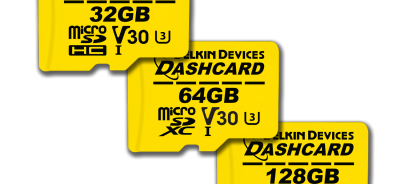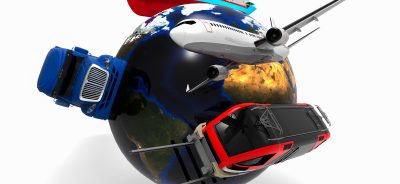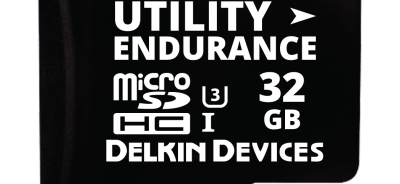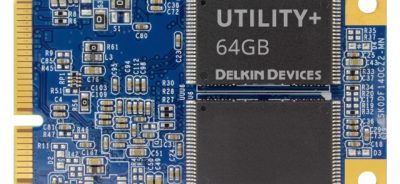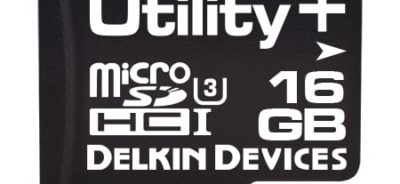Technical Success Stories: SMART Triggers
 “Data loss on our product is very expensive, is there a way to predict the end of a card lifespan before it happens?”– True Customer Stories
“Data loss on our product is very expensive, is there a way to predict the end of a card lifespan before it happens?”– True Customer Stories
This story starts with a painful fact, all embedded storage no matter how well optimized for the usage model, at some point will come to the end of its lifespan. Due to the technology used in all flash storage, there is a useful life that has limits. Delkin has created a business around maximizing that lifetime through various means in order to deliver a solution to the customer that meets their requirements. This is part of Delkin Life Cycle Management. Addressing the fact that all storage solutions, from all suppliers will wear out at some point, allows a conversation to take place around predicting the end of the lifespan. Being able to predict the failure and replace the storage before data is lost, or some other costs are incurred, is a critical element to many OEM’s.
SMART commands used in Industrial Grade removable storage have improved the OEM’s ability to predict failures, reduce down time, and schedule preventative maintenance in a much more efficient way. SMART commands are adopted across a number of form factors, including SD , CF , SSD and CFAST cards. Using these SMART commands beyond the initial evaluation stages and actually installing “SMART Triggers” into an embedded host’s application have allowed a level of predictability that solves the unexpected data loss situation.
Customer Story
The digital signage business is one in which an embedded storage data loss may be immediately apparent to everyone who sees it. Some signage is used in retail environments, some in traffic safety markets and even in stadiums and large public meeting spaces. When a card is at the end of its lifespan here, it often means a blank screen or error message, resulting in some kind of lost revenue or safety hazard. As such, digital signage OEM’s usually are eager to be aggressive in their preventative maintenance actions, rather than run the risk of getting a black eye from a non-working display.
“We really cannot have a card, no matter how old, lose data in the field unexpectedly, we figured Industrial grade products would outlast our hardware. Our thinking was if we use these industrial compact flash cards in our field installed base, they were more robust, and we would experience less unexpected failures” explained the product manager at a large digital signage OEM. “We wear cards out, but unexpected data loss on our product is very expensive, is there a way to predict the end of a card lifespan before it happens?”
Delkin Discovery
CPU technology has improved over the years as flash has continued to develop, and a controller even 5 years old may lack some of the tools and features that a very modern CPU may have. The onset of SMART tools gave every embedded card user a much wider array of data and health information about a card than they ever had before. Also this information is easier to acquire, and can even be done in a host application.
The first step for the Delkin Customer Applications team was getting a complete understanding of the requirements of the customer. Starting with the usage model of the cards, Delkin was able to determine what indicators appeared as a card was used over time. From this data it was an easy step to be able to estimate card endurance and useful life. While not an exact science, the customer was so negatively affected by an unexpected failure, they were willing to replace cards that still had 15% of their useful life remaining. This allowed appropriate gaps between preventative maintenance checks, and coincided with other maintenance, which meant it was not overly expensive.
SMART retrieves critical card information like P/E cycles per block, number of bad blocks, spare blocks remaining, # of normal startups of the card and even # of abnormal power ups. This, along with a lot of other information, gave the OEM a chance to determine the health, and therefore the predicted longevity of the card.
Delkin Solution
With this data, the customer was able to program their application to regularly run a SMART evaluation of the card to determine flash endurance using SMART commands, and compare this data against an established threshold of data to understand the cards remaining life. By choosing 5 critical card usage statistics and comparing them to the established maximum, the host could signal when a card might be reaching its 85% used status. In many cases this may take years, however there was now a tool that would virtually prevent any unexpected data loss. An added benefit was that now if a card was damaged or a host was acting in a way to unusually wear a card, there was a means to be warned ahead that the card was being worn in an abnormal manner. This could make the service people aware of other issues, like heat or power anomalies that were occurring elsewhere. The end result was zero unexpected errors and far more reliable signage.
SMART can also be used as a diagnostic tool on a PC to review estimated card endurance, using something like the Delkin Devices SMART Dashboard 1.1 software. Different CPU’s and form factors implement SMART in different ways, so be sure to ask your salesperson about your options.
Lesson Learned
You have to choose carefully when designing an industrial storage solution for your embedded device. Besides finding one that meets your requirements for physical size, capacity, temperature, cost, functionality, and your usage model, you need to choose a solution that will allow some custom requirements of your host application. Industrial flash and storage products rely on a strong, modern CPU to bring features your host can use. Consult with Delkin to help you make the right choice on an embedded storage solution that meets your needs.
Lean on Delkin’s Technical Team
Have you had a problem with your host storage? The Delkin Customer Applications team stands at the ready to be your trusted advisor for your host critical storage. We have solved hundreds of complicated host failures, and look forward to understanding your usage model for flash based Rugged Controlled Storage.
 Login
Login Register
Register


